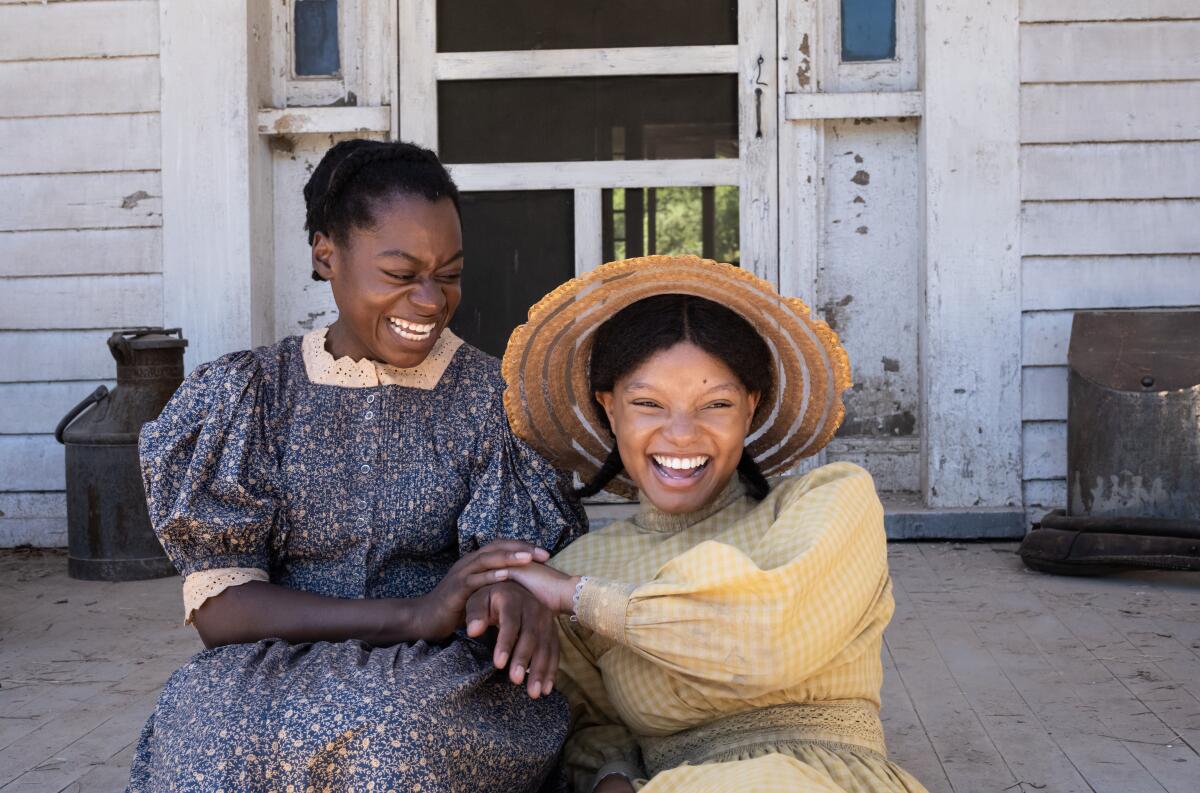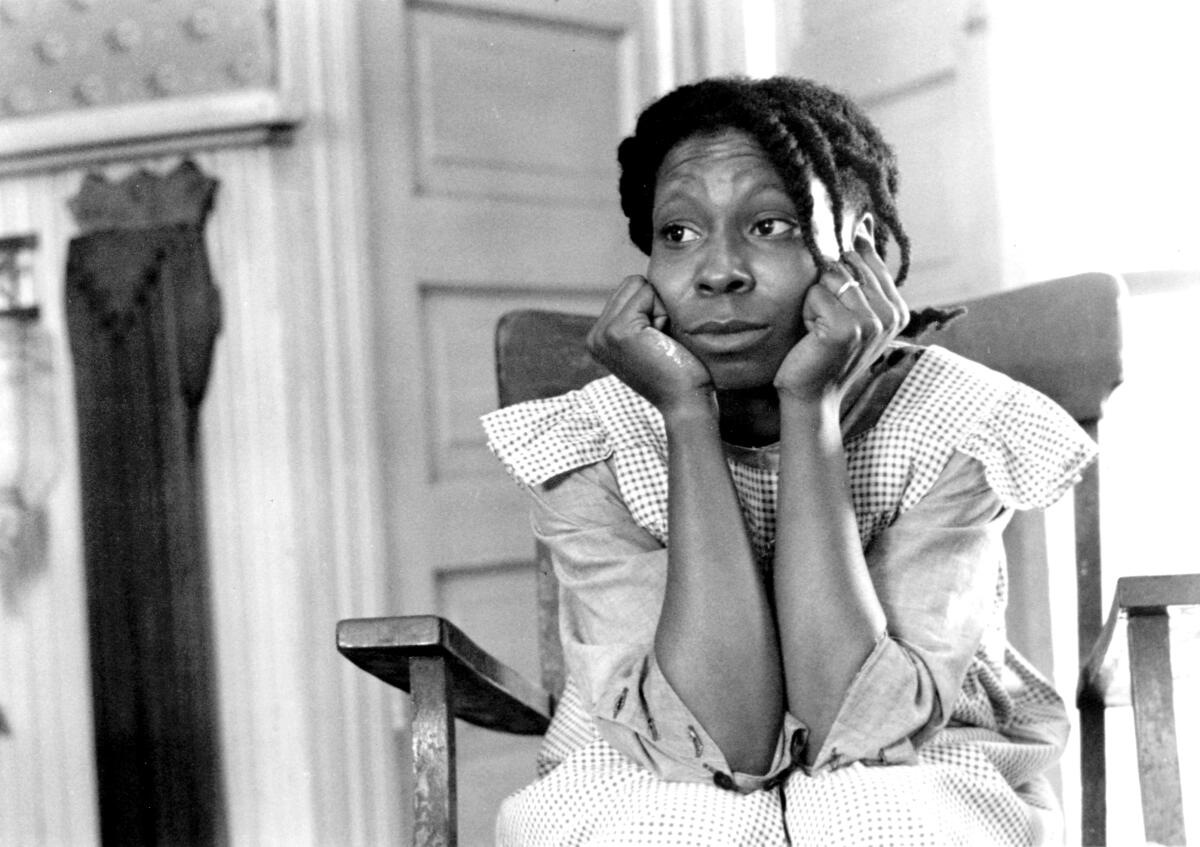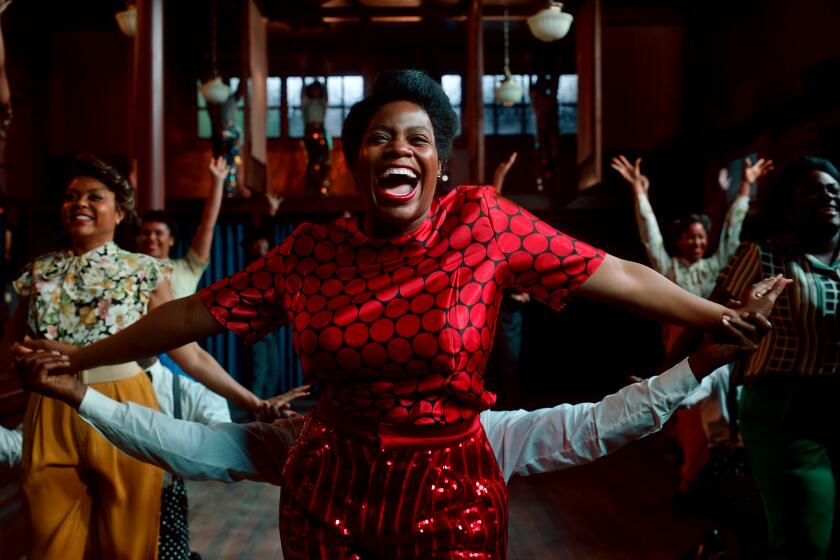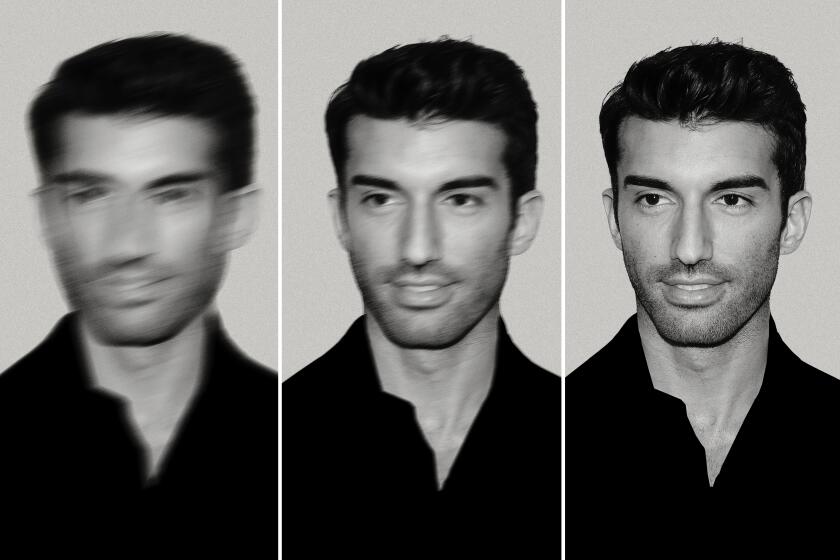‘Symbolic’ and ‘beautiful’: Inside Whoopi Goldberg’s secret cameo in the new ‘Color Purple’

- Share via
Warning: The following contains spoilers for “The Color Purple.”
A few minutes into the new movie adaptation of “The Color Purple,” young Celie (Phylicia Pearl Mpasi) is in the middle of giving birth in her bedroom. It’s a tough scene, given that she is only in her early teen years and the baby is a result of rape by the man she knows to be her father. And this second child, like her first, will be taken away from her immediately.
Still, there is a great sense of comfort, thanks to a familiar face.
“You’re doing just fine, Miss Celie,” says a midwife, played by none other than Whoopi Goldberg. “I just need you to push one more time.”
The surprise cameo was a way for the cast and creatives of the new Warner Bros. movie, now in theaters , to pay tribute to its on-screen predecessor. Goldberg’s first major movie role was starring in Steven Spielberg’s 1985 adaptation as Celie, a poor Black woman living in the rural South in the early 1900s. Goldberg had written to author Alice Walker after reading her Pulitzer Prize-winning novel, begging to play any character in the film. Walker responded that Goldberg was already on her radar for the lead role.
“I liked her right away,” Walker wrote in her 1997 book “The Same River Twice: Honoring the Difficult” of watching Goldberg in her one-woman stage show before she was cast. “I like people who refuse to be victims and delight in showing everybody else how this is done. She was wonderful, dreadlocking, with an irrepressible, sly gleam in her eye.”
The Times’ review praised Goldberg’s turn as Celie as “a most touching debut” — a performance that earned the film one of its 11 Oscar nominations. Goldberg has since said that, decades later, the movie “resonates for people because it says that, no matter what happens, if you keep going, it is the going forward, not necessarily the resolution of any goal, but the going forward in that goal, in spite of everything, is what will get us through life.”

Steven Spielberg, a Broadway show and now a movie musical all have tried to capture the queer love story in Alice Walker’s novel. Here’s how they did it — and why some argue they’ve all failed.
Screenwriter Marcus Gardley wanted Goldberg’s presence in the new movie to make sense both narratively and metaphorically. “We struggled with figuring out where it could happen and what character she would be, because the Spielberg film looms so large in our culture,” he tells The Times. “And these actresses grew up watching these iconic roles that inspired them to become actresses themselves.”
Since Gardley thought that Goldberg playing Celie’s mother “felt too on the nose,” he created the role of a local midwife. “Symbolically, that felt like the perfect part, because she’s the one to not only encourage her during the birth, but it’s like she herself gave birth to the role and now we see her passing it down,” he explains. “It’s one of the most beautiful scenes because you see [Goldberg] looking upon [Mpasi] with pride and telling her, ‘You can do it.’ ”
Capturing the key moment took some time, only because Goldberg kept making jokes. “We had to stop and laugh because of everything she did, and you forget that she comes from stand up [comedy],” recalls director Blitz Bazawule. “But more than anything, I just remember how caring and loving she was to Phylicia. It was symbolic not only because of what Whoopi represents in the canon of ‘The Color Purple,’ but what Whoopi represents, period — the juggernaut that she is, and the doors she kicked open.”
Working from the celebrated revival of the Broadway musical, an essential American story finally finds its best onscreen expression, directed by Blitz Bazawule.
The cameo has largely remained an unspoiled surprise, with not even a hint of reunion when the cast visited Goldberg’s ABC talk show “The View.” And though Goldberg has not attended promotional events for the new film (as other actors from the original movie have done), her absence is arguably part of her overall approach to the on-screen appearance.
“We had talked about it in her trailer a little bit, and she said, ‘I’m just here to pass the baton,’ ” says Bazawule of Goldberg. “I really appreciated that, because not everybody is as benevolent when it comes to knowing that ‘The Color Purple’ is really the star here. It was incredibly special to know that we had her blessing to move forward with this version.”
More to Read
Only good movies
Get the Indie Focus newsletter, Mark Olsen's weekly guide to the world of cinema.
You may occasionally receive promotional content from the Los Angeles Times.













